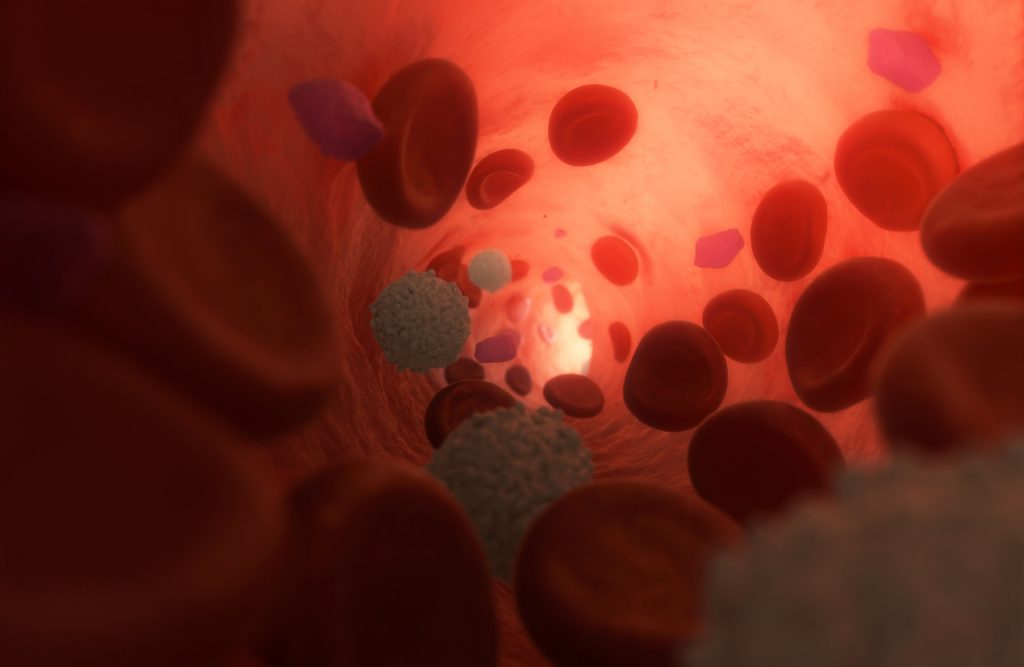What is Platelet-Rich Plasma (PRP) treatment?
Physicians specializing in musculoskeletal care have learned that the body has the ability to heal itself.
Platelet-rich plasma (PRP) involves removing, processing, and re-introducing your own cells to treat or prevent a medical condition.
Platelet-rich plasma therapy has been described as a regenerative medicine that can amplify natural growth factors your body uses to heal itself and helps alleviate pain. Platelet-rich plasma has been found to significantly enhance the healing process, using a PRP injection to address pain and injuries.
Specialists in the field of Regenerative Spine & Sports Medicine have used PRP to help athletes recover more quickly from sports injuries.
What are Platelet-Rich Plasma (PRP) injections?
Blood is made up of a liquid called plasma, which is comprised of red cells, white cells, and platelets. Platelets contain hundreds of proteins that help heal injuries. The role of platelets in the body is to help blood clot after an injury. With PRP treatments, the patient’s own blood is drawn.
Platelet-rich plasma (PRP) is produced by spinning the blood in a centrifuge machine to separate the platelets from the red blood cells.
The PRP is then injected back into the body to enhance the natural healing process and reduce pain and inflammation. PRP injections into damaged tissues stimulate your body to grow new, healthy cells and promote healing. Studies have shown that an increased concentration of growth factors in PRP can potentially speed up the healing process.
Where is PRP injected?
The collected platelets are injected into the injured or diseased body tissue to stimulate healing and regeneration.
PRP can be carefully injected into the injured area or to improve healing after surgery. For example, with Achilles tendinitis, a condition runners and tennis players commonly experience, the heel cord can become swollen, painful and inflamed. By treating the injured area with PRP during surgery, the healing process for the torn tendon may be improved.
In most cases, the patient does not experience any adverse reactions to the injections.
What are factors that can influence the effectiveness of PRP treatment?
- The area of the body receiving the treatment
- The overall health of the patient
- If the injury is acute (from a fall) or chronic (a long-lasting injury)
- The preparation of the PRP (the cellular makeup of the material that is injected)
What are the benefits of PRP treatments?
- Acts as a minimally invasive treatment that uses platelet-rich plasma to promote soft tissue regeneration
- Reduces the need for anti-inflammatories or stronger medications and improves function and mobility.
- Uses a patient’s own platelets to speed up the healing process.
- Provides an effective and reliable method for pain relief.
- Reduces swelling and discomfort.
- Provides relief to those who are suffering from trauma and other sports-related injuries that may affect joints, tendons, ligaments, muscles and other soft tissues of the body.
How are PRP injections prepared?
PRP injections include drawing samples of your own blood and running it through a centrifuge to concentrate the platelets. These platelets trigger cell reproduction and go directly into your injured or diseased body tissue.
This releases growth factors that stimulate and increase the number of reparative cells your body produces.
Who can Platelet-Rich Plasma help treat?
Platelet-rich plasma injections help alleviate pain, improve mobility and reduce inflammation.
- Tendon and joint injuries – Treats torn tendons and joint pain. e.g. tennis elbow and rotator cuff tears
- ligament and muscle injuries – Stimulates the healing process and reduces pain. e.g. pulled hamstring muscles
- Post-surgical healing – Accelerates healing after surgeries. e.g. meniscus repair
- Osteoarthritis – Helps reduce inflammation in the joints. e.g. knee osteoarthritis
- Hair Loss – Prevents hair loss and promote new hair growth. e.g. androgenic alopecia or male/female pattern baldness
- Cosmetic procedures – Rejuvenates the skin as an anti-aging option. e.g. reduce wrinkles, improve complexion and diminish scarring from acne
Who should not have Platelet-Rich Plasma injections?
While PRP is considered safe for most people, it’s not recommended for people who have any of the following medical conditions:
- Hepatitis C
- HIV or AIDS
- Blood cancer
- Cardiovascular disease, which requires taking a blood thinner
- Skin cancer in the area to be treated
How do platelet-rich plasma injections work?
In this video, Dr. Rik Patel Regenerative Spine & Sports Medicine Specialist from RegevityHealth.com, explains how Platelet Rich Plasma (PRP) can help reduce joint and tendon pain by injecting concentrated blood directly into joints or tendons where pain is experienced, in order to promote the body’s natural ability to heal itself.
PRP Therapy Possible Side Effects
PRP injections do not have major side effects and are considered a low-risk procedure since injections are drawn from your own blood. PRP injections are not suitable for everyone. Also, you should only get PRP injections from a licensed doctor. Learn more about PRP injections or find a doctor who performs PRP injections.
Last medically reviewed on October 6, 2022 by Dr. Rik Patel, Regenerative Spine & Sports Medicine Specialist
No content on this site, regardless of date, should ever be used as a substitute for direct medical advice from your doctor or other qualified clinician.

